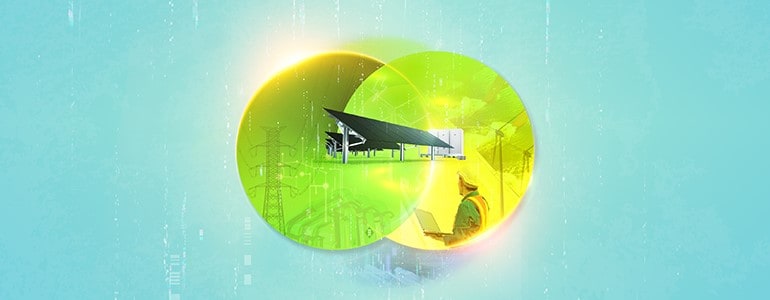2024 renewable energy industry outlook has been saved

Article
2024 renewable energy industry outlook
Renewable Landscape Overview:
In 2023, the renewable energy landscape experienced a distinction: Utility-scale solar saw substantial growth in the United States, outpacing other generation sources. However, wind struggled with rising costs, permitting delays, and transmission capacity. Supply chain constraints eased as clean energy and climate laws took effect.
Key Solar Highlights:
1. In the United States, between Jan-Aug 2023:
- utility-scale solar capacity additions outpaced additions from other generation sources reaching almost 9 gigawatts (GW), up 36% for the same period in 2022.
- small-scale solar generation grew by 20%.
- Only 2.8 GW of wind capacity came online, down 57% from last year.
- Over all renewables accounted for just over half of the capacity added, versus two-thirds last year.
- renewable energy’s share of US electricity generation remained level at 22%.
2. The US Energy Information Administration expects renewable deployment to grow by 17% to 42 GW in 2024 and account for almost a quarter of electricity generation. The estimate falls below the low end of the National Renewable Energy Laboratory’s assessment.
Key Trends Moving into 2024:
- Regulatory boosts: Historic investment in renewables will come into fuller view in 2024. Solar and storage deployments are soaring, and clean hydrogen is teed up for takeoff, while offshore wind is navigating rough waters. Transmission is the key obstacle to tackle.
- Reshoring supply chains: The clean energy industry is reshoring. Amid high import dependence, the first US plants for some upstream components will start in 2024. Shorter supply chains could strengthen resilience. Trends to watch include strategic partnerships, digitalization and recycling critical minerals.
- Reskilling the workforce: The record build-out of renewables and domestic supply chain requires growing and (re)training a workforce with the right skills in the right places. Challenges may be greatest in the newest industries. Generative AI is also reshaping talent needs.
- Resilience in renewables: Renewables are increasingly becoming a resilience strategy, operating when thermal sources failed over the past year. But gas continues to be considered most reliable. 2024 may be the year perception catches up with reality.
- Resurging technologies: Geothermal and renewable natural gas may enhance renewable portfolios in 2024. They could create synergies between intermittent and baseload renewables, between underground and over ground assets, and between electrons and molecules.


